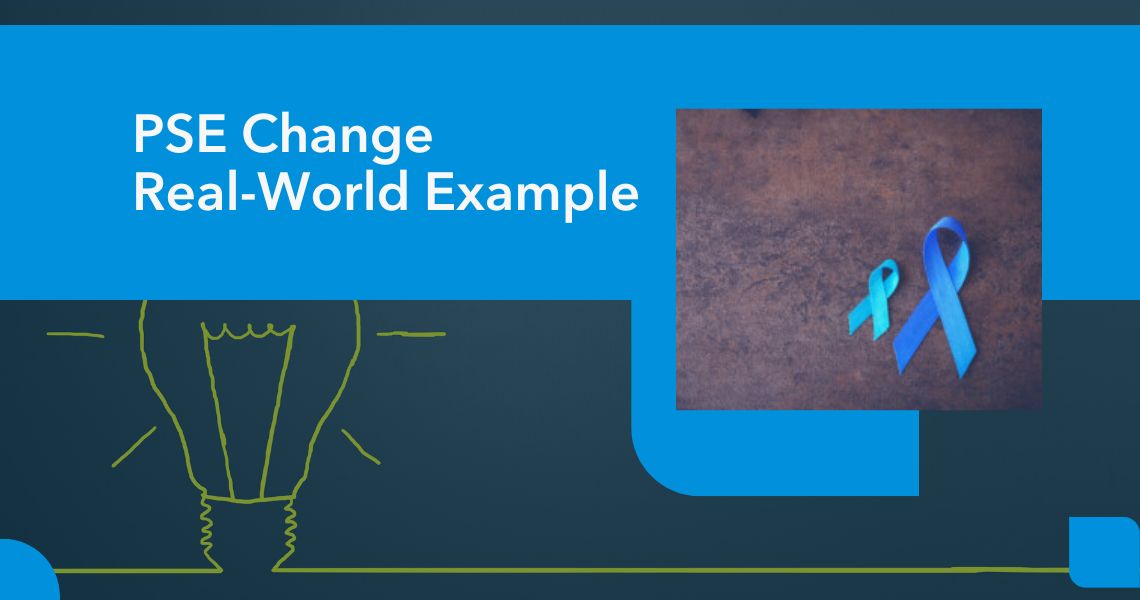Problem: In 1999, Kentucky’s CRC incidence rate was 66.7 per 100,000.1 That year, the state ranked 49th in the nation for CRC screening, with a rate of only 34.7% for colonoscopy and sigmoidoscopy.2
1Kentucky Cancer Registry. (2020). Age-Adjusted Cancer Incidence Rates in Kentucky, 1999. Retrieved from https://www.cancer-rates.info/ky/
2Centers for Disease Control and Prevention. (2015). BRFSS Prevalence & Trends Data. Retrieved from https://www.cdc.gov/brfss/brfssprevalence/
PSE Change Solution: To improve CRC screening rates, the Kentucky Cancer Consortium (KCC) catalyzed dedicated leaders, engaged a diverse group of partners, and identified tangible and intangible resources required to launch and sustain the initiative. Guided by the Kentucky Cancer Action Plan, partners worked together on different aspects of increasing CRC screening, including infrastructure, public awareness, education and outreach, health care professional and health system changes, policy changes and research. They also focused on needed resources for funding, lobbying and fundraising. The continuing efforts of the CRC Committee and its partners have resulted in a significant improvement in CRC screening rates. In 2016, 70.1% of Kentucky adults received USPSTF recommended CRC screening, and the state ranked 18th in the country.3 In 2016, CRC incidence decreased by 24.3% and mortality dropped by 28.3%.4,5.
3Centers for Disease Control and Prevention. (2015). BRFSS Prevalence & Trends Data. Retrieved from https://www.cdc.gov/brfss/brfssprevalence/
4Kentucky Cancer Registry. (2020a). Age-Adjusted Cancer Incidence Rates in Kentucky, 1999. Retrieved from https://www.cancer-rates.info/ky/
5Kentucky Cancer Registry. (2020b). Age-Adjusted Cancer Mortality Rates in Kentucky, 1999. Retrieved from https://www.cancer-rates.info/ky/
Resources to Support Similar Evidence-Based Initiatives
Evidence-Based Cancer Control Programs:
Filter programs by Program Area and Colorectal Cancer Screening
What Works for Health:
Patient financial incentives for preventive care
Patient shared decision making
Practice facilitation for primary care
Text message-based health interventions
The Community Guide:
American Cancer Society and Community Health Centers Partner to Increase Colorectal Cancer Screening

